
The Edinburgh Tattoo
The Royal Edinburgh Military Tattoo was first held on the Castle Esplanade in 1950 drawing 6000 spectators in a single performance. Today, the Tattoo holds 25 performances through the Edinburgh Arts Festival entertaining over 200,000 spectators. The origin of the word tattoo is from the 17th century Dutch phrase doe den tap toe which literally translates to "turn off the tap", a signal for local tavern owners to cease the sale of ale so that soldiers would return to barracks. (It is also the origin of our bugle tune "Taps" signalling the end of the day.)
The Tattoo includes includes as many as a dozen pipe bands from around the Commonwealth and the world and other military bands as well as folk performers from around the world. The pipe bands present here are the Scots Guard, Royal Highland Fusiliers, Royal Scots, King's Own Scottish Borders, Blackwatch, The Highlanders, The Argyll & Sutherland Highlanders, The Irish Guards, The Royal Gurkha Rifles, The Scottish University's Officers Training Corp, The Rats of Tobruk Memorial Pipes & Drums, The City of Wellington, NZ, Pipe Band and the The South Africa Irish Pipes & Drums. Other performers include the Band and Bugles of the Light Brigade, the Massed Highland Dancers, the Trinidad & Tobago Defence Force Steel Orchestra, the Russian Cossack State Dance Company, the Royal Marine Commandos, the Royal Marine Band and The Guard of His Majesty the King of Norway. The highlights of the Tattoo includes the entrance of the massed bands at the beginning, the Lone Piper near the end and the final retreat of the performers and pipe bands from the Esplanade.
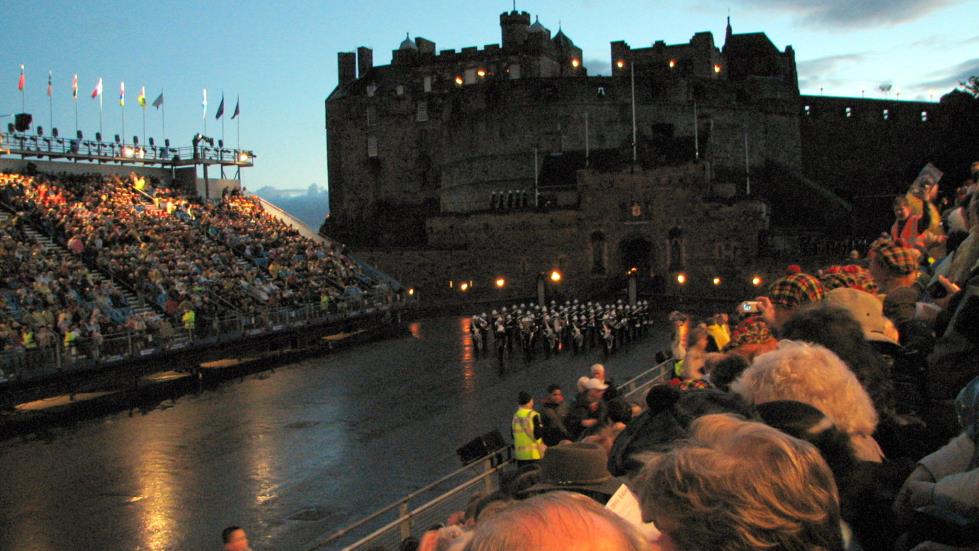
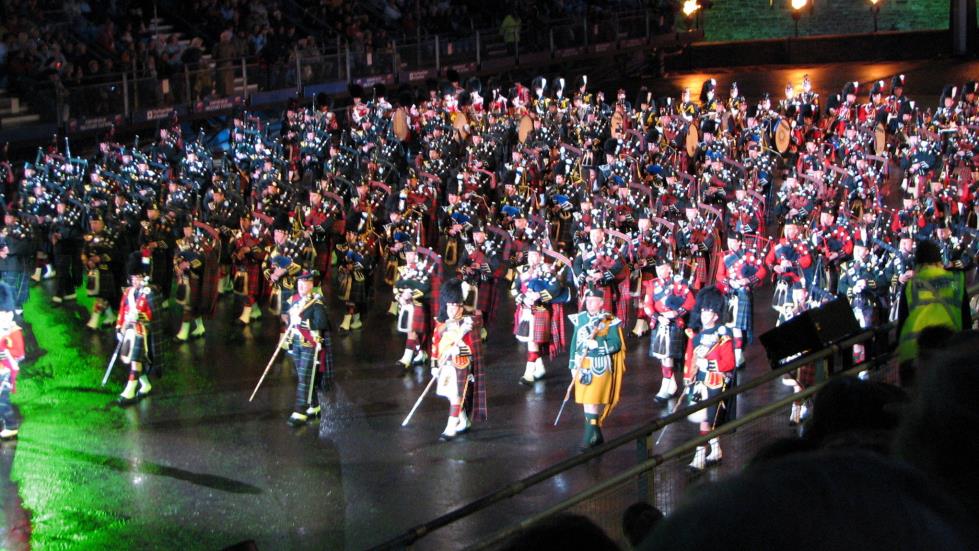

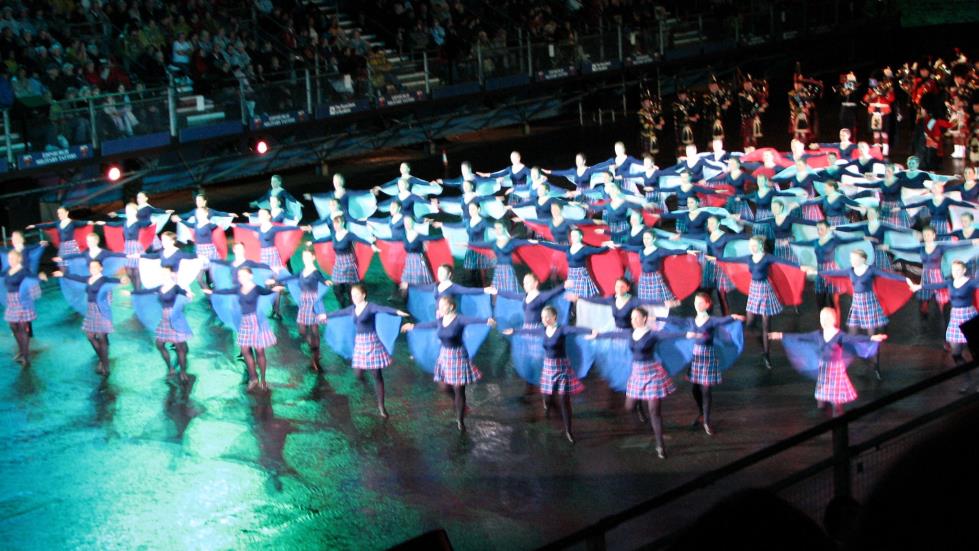
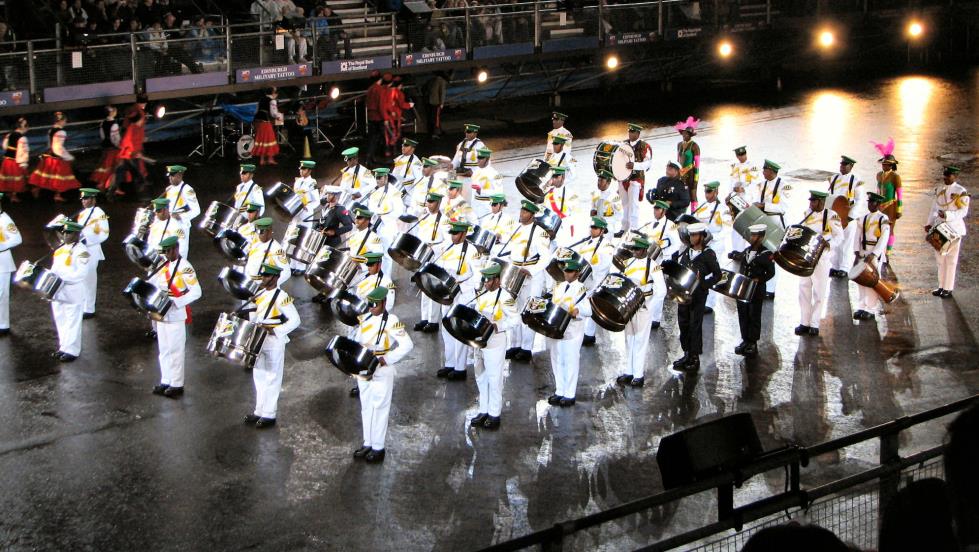
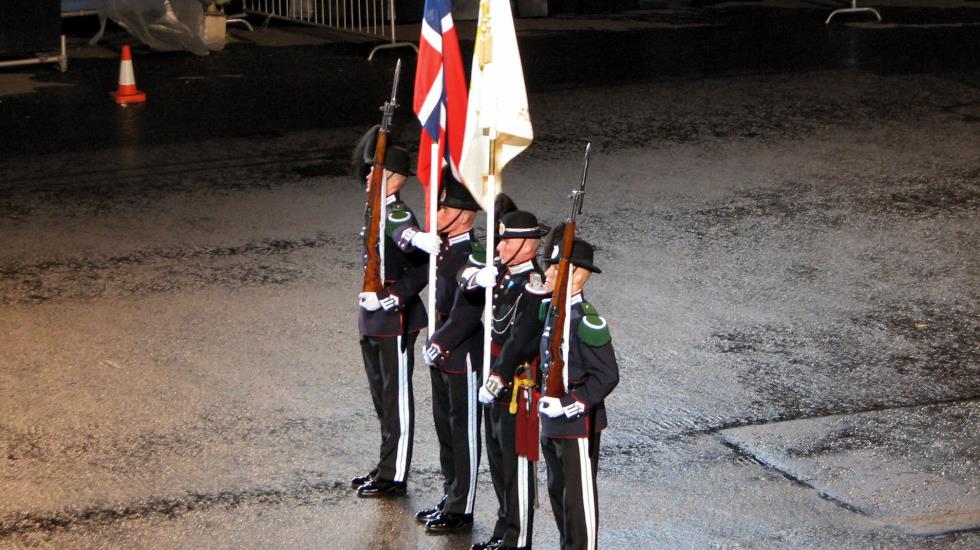
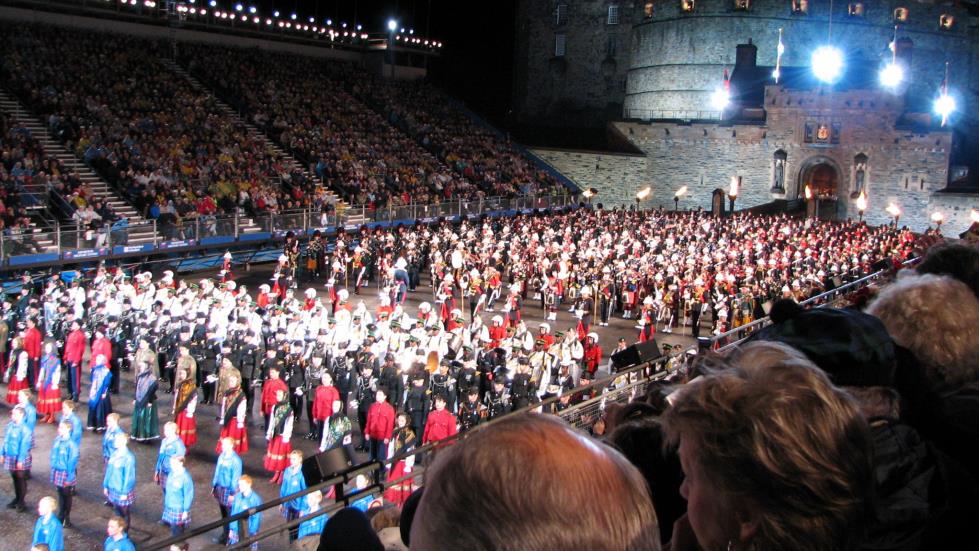
The Royal Edinburgh Military Tattoo was first held on the Castle Esplanade in 1950 drawing 6000 spectators in a single performance. Today, the Tattoo holds 25 performances through the Edinburgh Arts Festival entertaining over 200,000 spectators. The origin of the word tattoo is from the 17th century Dutch phrase doe den tap toe which literally translates to "turn off the tap", a signal for local tavern owners to cease the sale of ale so that soldiers would return to barracks. (It is also the origin of our bugle tune "Taps" signalling the end of the day.)
The Tattoo includes includes as many as a dozen pipe bands from around the Commonwealth and the world and other military bands as well as folk performers from around the world. The pipe bands present here are the Scots Guard, Royal Highland Fusiliers, Royal Scots, King's Own Scottish Borders, Blackwatch, The Highlanders, The Argyll & Sutherland Highlanders, The Irish Guards, The Royal Gurkha Rifles, The Scottish University's Officers Training Corp, The Rats of Tobruk Memorial Pipes & Drums, The City of Wellington, NZ, Pipe Band and the The South Africa Irish Pipes & Drums. Other performers include the Band and Bugles of the Light Brigade, the Massed Highland Dancers, the Trinidad & Tobago Defence Force Steel Orchestra, the Russian Cossack State Dance Company, the Royal Marine Commandos, the Royal Marine Band and The Guard of His Majesty the King of Norway. The highlights of the Tattoo includes the entrance of the massed bands at the beginning, the Lone Piper near the end and the final retreat of the performers and pipe bands from the Esplanade.
 Doune & Stirling
Doune & Stirling